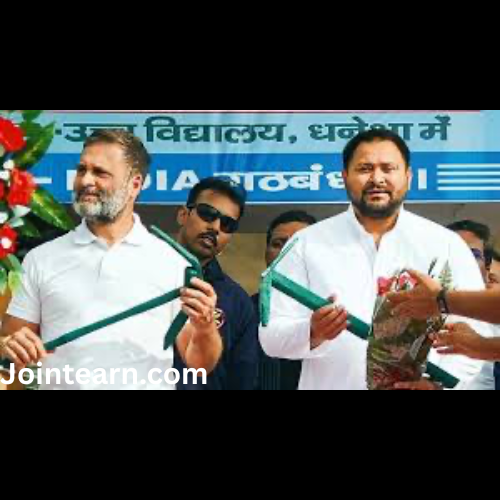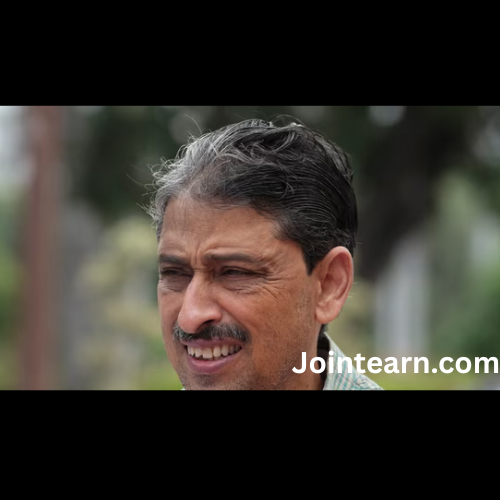
In the heart of Bihar’s political battleground, as assembly elections approach, Dalit voters have emerged as a decisive force that both the ruling National Democratic Alliance (NDA) and the Opposition’s Mahagathbandhan are vying to win over. The contest for the Dalit vote — which constitutes nearly 16% of Bihar’s population — reflects not only shifting political loyalties but also the continuing social and economic struggles of the state’s most marginalised communities.
As the evening sun sets over the dusty lanes of Muzaffarpur, 48-year-old bicycle mechanic Raghunath Ram adjusts a wheel outside his small thatched home in Pokhraira. Around him, a cluster of 15 Dalit families are engaged in animated discussions about politics. Raghunath, a supporter of chief minister Nitish Kumar, credits him for the village’s roads, electricity, and safety. But his neighbour, a young labourer, disagrees — arguing that after nearly two decades of Nitish’s rule, it is time for a change, and this time, they will back Tejashwi Yadav and the Opposition Grand Alliance. This quiet disagreement mirrors the larger political divide among Dalits across Bihar.
At Jhitkahiya Road, also in Muzaffarpur, 35-year-old Jagat Ram, who works as a labourer on Bhumihar-owned farms, acknowledges Nitish Kumar’s contribution to development and law and order. Yet, he remains undecided. “We will take a collective decision a few days before the voting day,” he says. Like Jagat, many Dalit families are torn between gratitude for Nitish’s welfare policies and frustration over unemployment, rising costs, and stalled rural progress.
The Bihar Assembly elections will be held in two phases on November 6 and 11, with counting on November 14. For the NDA, which includes the Janata Dal (United), Bharatiya Janata Party (BJP), Hindustani Awam Morcha (HAM), and Lok Janshakti Party (Ram Vilas), Dalits have long been a cornerstone of its electoral arithmetic. The Opposition — comprising the Rashtriya Janata Dal (RJD), Congress, and Left parties under the INDIA bloc — is now making a concerted push to weaken that base.
Political analysts say the NDA’s structure gives it an advantage in caste coalition building. “The NDA appeals to a wider spectrum of caste groups than the Grand Alliance,” explains Manindra Thakur, professor at the Centre for Political Studies, Jawaharlal Nehru University. “Nitish Kumar has carefully positioned himself as the champion of the Mahadalits. Jitan Ram Manjhi of HAM draws support from the Manjhi community, and Chirag Paswan leads the Paswan or Dusadh vote bank. By contrast, the Grand Alliance has largely depended on Yadav and Muslim voters.”
In many Dalit tolas (settlements), Nitish’s name still commands respect. “He has given us roads, electricity, and safety,” says Dheeraj Paswan from Marwan. “Earlier, women had to return home before sunset. Now, we feel secure even at night.” Such testimonies underscore the chief minister’s image as a provider of stability and basic development — an image that helped him survive waves of political realignment over two decades.
But the Mahagathbandhan senses an opportunity. Its leaders are betting that fatigue with Nitish’s long tenure, limited job creation, and the state’s poor health infrastructure will push a segment of Dalit voters toward the Opposition. “Nitish Kumar has done good work, but change is necessary in a democracy,” says Sudam Majhi, a shopkeeper in Bihar Sharif, Nalanda. “If you keep baking one side of the roti, it will get burnt.” The analogy captures the mood of those who acknowledge progress but want a new leadership direction.
A recent survey by the National Confederation of Dalit and Adivasi Organisations (NACDAOR) — an umbrella body representing Scheduled Castes (SC) and Scheduled Tribes (ST) — provides statistical weight to this sentiment. According to the report, only 45.46% of Dalit respondents expressed satisfaction with Nitish Kumar’s performance, while 48.4% were dissatisfied. The remaining 6.1% chose not to respond. The dissatisfaction was more pronounced among several major Mahadalit sub-castes, including Rajwar, Dhobi, Dusadh (Paswan), and Chamar. In contrast, smaller communities such as Mushahar, Valmiki, and Pasi remained more supportive of the incumbent government.
Zone-wise, the survey revealed striking regional variations. In the Kosi region, 72.3% of Dalits favoured the Grand Alliance, with only 20.4% backing the NDA. The Mahagathbandhan also led in Mithilanchal (43% vs 38%), Simanchal (43% vs 41%), Bhojpur (54% vs 24%), and Champaran–Magadh–Patliputra zones, where the Opposition had an edge. The findings suggest that while Nitish’s personal appeal remains strong in pockets, particularly among older Mahadalit voters, the Opposition has made notable inroads among younger and more educated Dalits.
Ashok Bharti, NACDAOR’s chairperson, attributes the potential shift to a combination of policy neglect and economic distress. “A large section of Dalit voters feels excluded from Bihar’s development story,” he says. “Several welfare schemes that benefitted Dalits have been rolled back. Atrocities against Dalits are rising, educated youth face joblessness, and overall development has failed to reach the community effectively.”
Recognising this sentiment, the Congress has tried to rejuvenate its Dalit outreach. The party appointed Rajesh Ram, a Dalit MLA, as its Bihar unit president earlier this month. On October 17, Rajesh Ram struck a defiant note on X, writing, “Dalits will not be suppressed — will not bow down. Now the revolution will happen. Jai Bapu, Jai Bhim, Jai Constitution, Jai Congress.” His appointment is part of the INDIA bloc’s broader attempt to reshape its social coalition ahead of the polls.
However, past electoral data suggest that shifting Bihar’s Dalit vote is no easy task. In the 2024 Lok Sabha elections, Prime Minister Narendra Modi’s NDA won five of the six reserved constituencies in the state. In the 2020 Assembly polls, the NDA bagged 21 out of 38 Scheduled Caste seats, with the INDIA bloc winning most of the remaining ones. The Scheduled Tribe votes, though limited to just one reserved constituency, were split evenly between the two alliances. These numbers underscore the NDA’s entrenched presence in Dalit-majority constituencies, built through decades of welfare outreach, targeted schemes, and community leadership representation.
Still, the Mahagathbandhan hopes to leverage anti-incumbency and economic discontent. “People appreciate Nitishji’s work but are also frustrated by unemployment and inequality,” says an RJD local organiser in Gaya. “Tejashwi represents the future — youth, energy, and change.” The Opposition is also invoking the memory of social justice icons like B.R. Ambedkar and Jagjivan Ram to connect emotionally with Dalit voters.
For many Dalit families, however, the debate remains deeply personal. At the end of a long day in Muzaffarpur, Raghunath Ram pauses to reflect. His mud home, with a thatched roof and earthen floor, stands beside a narrow lane. Children run barefoot, laughing through the puddles after a light drizzle. “We just want our lives to improve,” he says quietly. “Whoever does that will get our vote.”
That sentiment — weary yet hopeful — encapsulates the Dalit dilemma in Bihar’s political landscape. Despite years of incremental progress, vast inequalities persist. Across rural Bihar, pucca houses and paved roads coexist with clusters of mud huts and hand pumps. The daily lives of Dalits remain tied to manual labour, migration, and uncertain wages. Education and healthcare access are patchy, and land ownership remains minimal. For all the promises of empowerment, social mobility has been slow.
Whichever coalition comes to power after November 14, Dalit upliftment will remain Bihar’s unfinished story. Nitish Kumar’s welfare model and Tejashwi Yadav’s promise of change both carry weight, but the question that hangs over Bihar’s heartland is whether either side can truly transform the lives of those who have long been at the margins of progress.


Leave a Reply